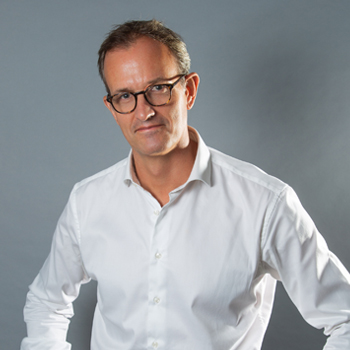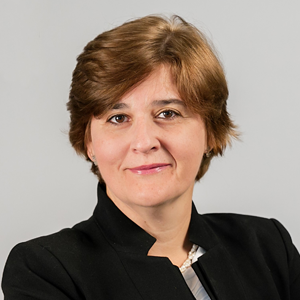Adding advanced technology and digital value to new products and services through open innovation

Prysmian Group’s R&D team works with the group’s IT and Digital Innovation Lab functions in tandem with external “innovation factory” Corporate Hangar (partly owned by Prysmian) and external technology providers to create new products with add-on features that go beyond its core cables business.
Prysmian Group’s product line-up is benefitting from its open innovation approach, because seeking expertise outside the company enables Prysmian to add technological value and new services to complement its energy and telecoms cables portfolio.
“We have created an open innovation ecosystem with Corporate Hangar that helps us to tap into the very best external technology providers with speed. This collaborative approach is enriching the group’s existing product offering with new digital and robotics functionalities to make our cables smarter, more sustainable and more efficient,” says Srini Siripurapu, Chief R&D Officer.

Srini Siripurapu
Chief R&D Officer
Here’s a look at several products that are the result of open innovation at Prysmian: Alesea, PryID, E3X Field Robots and Predictive Quality.
The Alesea start-up is a good example of how open innovation works at Prysmian. Customers wanted to make their cable drum management more efficient, sparking an idea internally for an IoT smart device installed on the drum, letting customers track its location and their cable inventory. Prysmian Supply Chain and Digital Innovation Lab members worked alongside Corporate Hangar, the group’s external “innovation factory,” to develop and launch the product, which is now being tested as a new start-up at 12 companies in Europe and North America.
“Alesea is a start-up that demonstrates how Corporate Hangar works closely with Prysmian’s internal functions. We coordinated all aspects of development and customer engagements maximizing value that can be provided from Prysmian,” says Markus Venzin, managing partner at Corporate Hangar.

Markus Venzin
Managing Partner at Corporate Hangar
PryID is another product that uses digital technology, this time to give cables a “digital fingerprint,” providing information about the type of cable, its location, and what it is connected to. The solution has three components: an RFID-sensored cable, cloud data and customized dashboards. This project was developed by Prysmian’s R&D staff in Northern Europe and headquarters, working with Prysmian’s Digital Innovation Lab and Corporate Hangar.
“We are a hardware company that is reaching outside its core business through open innovation to see how we can open up space to add a software or digital layer to our products,” says Stefano Brandinali, CIO and Chief Digital Officer.

Stefano Brandinali
CIO and Chief Digital Officer
Prysmian’s E3X technology features a thin durable coating applied in the factory, used for overhead transmission lines that increases current capacity, reduces ice adhesion and reduces line sag transforming power grid sustainability, reliability, resilience and cost of ownership. Customer innovation workshops revealed a strong interest in field applications to upgrade existing overhead infrastructure. In partnership with Infosys Advanced Engineering Group, Prysmian has now developed specialized robots that will prepare and apply the coating while the overhead line continues to function -- which can be a game-changer.
“Advanced robotics and sensor technologies can play a key role to provide innovative services even in traditionally conservative market segments as long as we solve a real customer problem and increase the safety & reliability of the power grid,” says Valeria Garcia, Vice President and Chief Engineer R&D for Prysmian North America.

Valeria Garcia
Vice President and Chief Engineer R&D for Prysmian North America
Predictive Quality is a project that uses sophisticated statistical and artificial intelligence algorithms to crunch data collected from Prysmian’s fibre optics factory machinery in order to predict production quality, thereby reducing scrap and costs, optimizing procedures, and improving cable quality. Carlotta Dainese, who leads Prysmian Group’s Digital Innovation Lab, partnered with MoxOff, a spin-off created at Milan’s Polytechnic that applies mathematics to industrial processes. This unique production tool has been successfully tested at Prysmian Group’s Battipaglia optical fibers plant near Naples, Italy.






